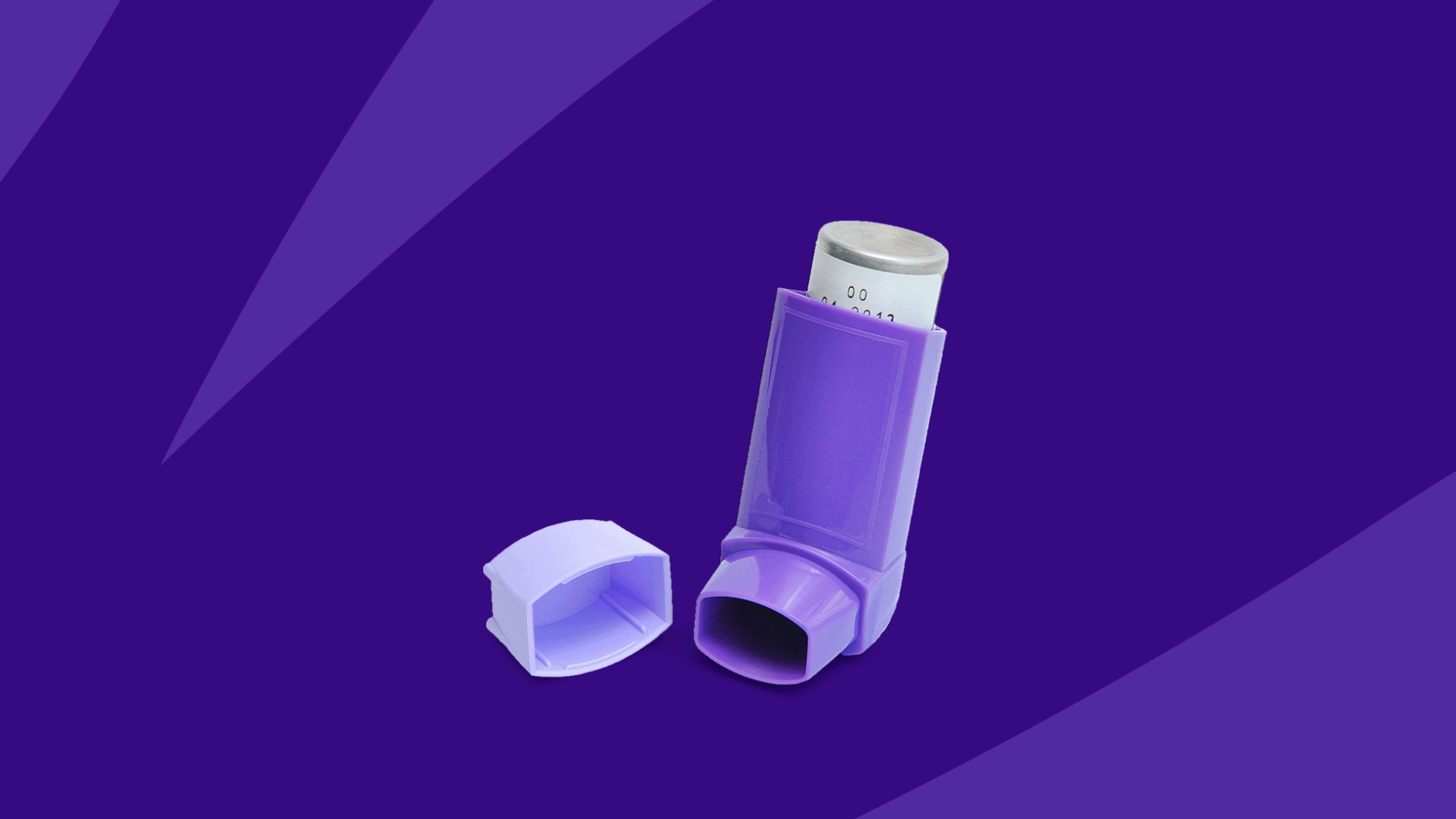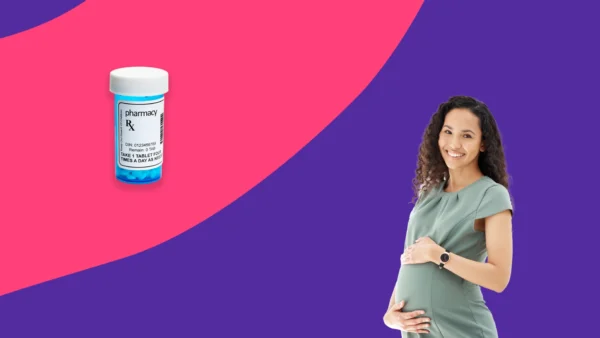Compare Bevespi alternatives | LABA and ICS combinations | LABA, LAMA, and ICS combinations | LAMAs | Oral corticosteroids | Inhaled short-acting muscarinic antagonists | Natural alternatives | How to switch meds
Bevespi Aerosphere is an inhaled brand-name prescription drug product used in the maintenance treatment of chronic obstructive pulmonary disease (COPD). It is the combination of two drugs, glycopyrrolate, a long-acting muscarinic antagonist (LAMA), and formoterol fumarate, a long-acting beta-agonist (LABA). Although they work via their own distinct mechanisms, LAMAs and LABAs ultimately lead to bronchodilation, or an opening and broadening of the airways. Bevespi is not approved by the Food and Drug Administration (FDA) for the treatment of asthma.
Effective treatment of COPD is an important factor to many. In the United States alone, COPD is estimated to affect 15 million adults. It is the fourth leading cause of disability in the United States according to the Centers for Disease Control and Prevention (CDC), and this has effects on society as a whole including the workforce and healthcare system.
So what is COPD? COPD is comprised of two conditions, and most people who have COPD display symptoms of both to some varying extent. The first condition is emphysema. Your lungs have many air sacs, and the functionality of them is to contract and expand to move air. The walls of the sacs need to be “stretchy” and healthy in order for this to occur. In emphysema, these sac walls become damaged, and they can no longer contract and expand effectively to move air efficiently. The second condition of COPD is chronic bronchitis. This is characterized by constant irritation and inflammation of the lining of the airways. The presence of thick mucus makes it hard to move air in and through the airways.
There is no cure for COPD. It can prevent even the most basic of life functions like walking, cooking, or bathing. Fortunately, the symptoms of COPD can often be managed with medications like Bevespi and allow people to live relatively normal lives with COPD along with other healthy lifestyle changes.
The manufacturer of Bevespi, AstraZeneca, trialed the combination of glycopyrrolate and formoterol after evaluating the results of each drug on COPD symptoms alone. Bevespi consistently provided better results measured by forced expiratory volume (FEV) as compared to each drug component used alone or as compared to a placebo. Patients on Bevespi also had to use short-acting rescue bronchodilator inhalers like albuterol less frequently.
There are some patients for whom Bevespi may not be the ideal choice. Though COPD doesn’t typically affect children, Bevespi is not indicated for children or women who are pregnant or breastfeeding. Bevespi should be used cautiously in those with impaired kidney or liver function. Glycopyrrolate is an anticholinergic drug, and this means that there are patients with some conditions where glycopyrrolate should be avoided or used cautiously. These include those with narrow-angle glaucoma, hyperthyroidism, seizure disorder, urinary retention, or chronic urinary tract infections. Formoterol and glycopyrrolate can have negative effects on pre-existing cardiovascular conditions as well, and those should be monitored closely if your doctor chooses to try Bevespi.
Price is always a consideration as well. The manufacturer of Bevespi does offer a savings card, however, the price of Bevespi before insurance approaches $500 per month, and this may make Bevespi unattainable for many. If you are concerned that Bevespi isn’t the best choice for you, keep reading. There are other treatment options to discuss with your doctor.
What can I take in place of Bevespi?
There are other treatment options if Bevespi isn’t the right one for you. These include other single drug and combination drug inhalers as well as oral medications. Generally speaking, drugs used in COPD are aimed to either open the airways, decrease mucus production, decrease airway inflammation, or decrease systemic inflammation. This isn’t intended to be medical advice. Your doctor or healthcare provider can evaluate your specific symptoms to determine which treatment options are most appropriate for you.
Compare Bevespi alternatives |
|||
|---|---|---|---|
| Drug name | Uses | Dosage | Savings options |
| Bevespi (glycopyrrolate/ formoterol) | COPD maintenance treatment | 2 puffs (9/ 4.8 mcg each) twice daily in the morning and evening | Bevespi coupons |
| Symbicort (budesonide/ formoterol) | Asthma maintenance treatment, Chronic obstructive pulmonary disease (COPD) | 2 puffs (80/4.5 or 160/4.5 mcg) inhaled by mouth twice daily | Symbicort coupons |
| Breo Ellipta (fluticasone/ vilanterol) | Asthma maintenance treatment, Chronic obstructive pulmonary disease (COPD) | 1 inhalation (100/25 mcg) by mouth once daily | Breo Ellipta coupons |
| Anoro Ellipta (umeclidinium/ vilanterol) | COPD maintenance treatment | 1 actuation (62.5/25 mcg) by mouth once daily | Anoro coupons |
| Spiriva Handihaler (tiotropium) | COPD maintenance treatment | 2 inhalations (18 mcg) once daily | Spiriva coupons |
| Advair Diskus (fluticasone/ salmeterol) | Asthma maintenance treatment, Chronic obstructive pulmonary disease (COPD) | 1 inhalation (250/50 mcg) twice daily in the morning and evening | Advair Diskus coupons |
| Incruse Ellipta (umeclidinium) | COPD maintenance treatment | 1 actuation (62.5 mcg) by mouth once daily | Incruse Ellipta coupons |
| Trelegy Ellipta (fluticasone/ umeclidinium/ vilanterol) | Asthma maintenance treatment, Chronic obstructive pulmonary disease (COPD) | 1 inhalation (100/62.5/25 mcg) by mouth once daily | Trelegy Ellipta coupons |
| Mucomyst (acetylcysteine) | COPD adjunct treatment, mucus thinning | 3 to 5 ml of the 20% solution nebulized 3-4 times daily | Mucomyst coupons |
| Ventolin/ Proventil (albuterol) | Asthma exacerbation, bronchospasm | 2 puffs (90 mcg each) every 4-6 hours | Ventolin coupons |
Other alternatives to Bevespi
- Advair HFA (fluticasone/ salmeterol)
- Dulera (mometasone/ formoterol)
- Breztri (budesonide/ glycopyrrolate/ formoterol)
- Spiriva Respimat (tiotropium)
- Striverdi Respimat (olodaterol)
- Decadron (dexamethasone)
- Atrovent (ipratropium)
- Medrol (methylprednisolone)
- Combivent (albuterol/ ipratropium)
Top 5 Bevespi alternatives
The following are some of the most common alternatives to Bevespi.
1. Inhaled long-acting beta 2 adrenergic agonists (LABA) and inhaled corticosteroid (ICS) combinations
The combination of a LABA drug and a corticosteroid provides bronchodilation effects of the LABA with the anti-inflammatory effects of the corticosteroid. Corticosteroids can raise blood sugar, and therefore this type of drug combination should be used cautiously in diabetic patients. This drug combination should not be initiated if the patient’s status is rapidly declining. This is not considered to be life-saving treatment or a rescue inhaler, however, it can be helpful in more minor exacerbations of COPD symptoms and is best utilized as maintenance therapy. This combination is a good option if a LAMA anticholinergic is not a good choice for you.
Examples: Advair Diskus, Dulera, Symbicort, Breo Ellipta
2. Inhaled long-acting beta 2 adrenergic agonists (LABA), long-acting muscarinic antagonist (LAMA), and inhaled corticosteroid (ICS) combinations
This combination of all three categories is often referred to as “triple therapy” combining two types of bronchodilators and the anti-inflammatory effects of the ICS. This is an appropriate choice when the response to one or two of the drugs is not adequate. Using a combination inhaler improves compliance for patients and makes dosing less cumbersome for them. It may potentially save the patient some out-of-pocket expenses depending on their insurance coverage by reducing to one copay.
Examples: Trelegy Ellipta, Breztri
3. Inhaled long-acting muscarinic antagonist (LAMA)
Daily administration of an inhaled LAMA provides bronchodilatory effects which for many are adequate to control COPD symptoms and improve breathing. Spiriva Handihaler (tiotropium) is an inhaler device that utilizes capsules that contain a powder that is aerosolized by the inhaler device. It is important not to swallow the capsule whole. The capsules for the handihaler contain lactose and therefore those with a lactose allergy or hypersensitivity shouldn’t use the handihaler. The Spiriva Respimat does not use lactose-containing capsules, and those are safe.
Examples: Spiriva Handihaler, Spiriva Respimat
4. Oral corticosteroids
Inflammation in COPD patients is unfortunately not just isolated to the lungs. There is inflammation linked to the cardiovascular system and other major organs which affects the quality of life. Oral corticosteroid treatment in COPD patients has been shown to improve lung function, shorten hospitalizations, and improve the shortness of breath that COPD patients experience. Unfortunately, long-term oral corticosteroid treatment is also linked to an increased risk of adverse effects such as hyperglycemia, hypertension (high blood pressure), and osteoporosis. Generally, if a COPD patient is considered stable and generally well-controlled on other treatments, oral corticosteroids would not be the best choice. However, for a patient with frequent relapses who is struggling to gain control of their severe COPD symptoms and carry on with normal daily functions of living, a longer-term regimen of oral corticosteroids may be a valid choice to regain control.
Examples: Medrol, Decadron
5. Inhaled short-acting muscarinic antagonist
Ipratropium can be administered via oral inhaler or nebulizer and is an effective way to reverse bronchospasm associated with COPD. It is short-acting, and for many would only be appropriate as part of an acute treatment or rescue treatment plan. However, for patients with early stage, mild, stable, COPD, a short-acting muscarinic antagonist alone can provide effective control. It would not be appropriate for someone with more advanced disease.
Examples: Atrovent (ipratropium)
Natural alternatives to Bevespi
There really are no natural treatments for COPD, and there is no cure. The most effective non-medication approach you can do is live a healthy lifestyle that prevents the onset of COPD or decreases the symptoms if you already have COPD. This includes eating a diet of high-value nutrition, avoiding smoke and tobacco, and avoiding areas of high air pollution. Even sprays like bug spray or sunscreen are bad for your lungs if you constantly expose yourself to them. Maintaining a good amount of consistent physical activity is so important. It is very difficult to become active once COPD has set in.
There are other lifetime considerations of your health you should monitor. Maintain a healthy weight. Vaccinate yourself against preventable diseases, especially those which can affect your airways like influenza, pneumonia, and now coronavirus.
Once you have COPD, you can not get rid of it. You can only manage it through healthy living and medications. Protect your lungs and your overall health with good choices your entire life.
How to switch to a Bevespi alternative
If you or someone you know suffers from COPD, but are unsure that Bevespi is the best treatment option for you, speak with your healthcare provider. There are many more treatment options available that may be more appropriate for you or suit your price range better. The worst thing you can do is not do anything to treat your COPD. Never stop Bevespi Aerosphere or any COPD treatment without first seeking advice from your doctor. This could lead to sudden breathing problems and worsening of symptoms which could be severe or fatal. Work with your doctor or pharmacist to find a treatment option that is appropriate and affordable for you.











